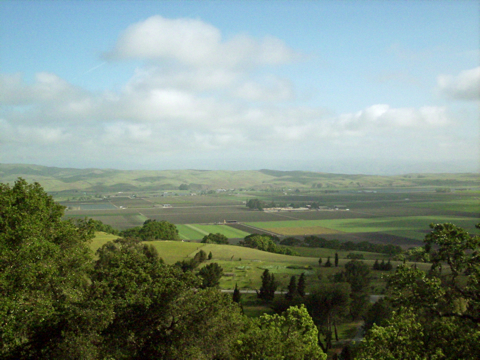Carol took our 1993 Toyota Camry down to Dave’s Auto Repair. We thought there was something wrong with the hand brake, but it turned out the reason the brake light was on was because there was a leak in the brake line. It was going to cost three thousand dollars to fix. Carol called me up, we talked it over, and I said I thought three thousand was still cheaper than buying a new car. Carol told the mechanic to go ahead and fix the car. There was a moment of silence, and it became obvious he was not expecting her to say that. He told her that the gas tank was also rusted out, and the floor boards were about to rust through. It was time to get another car.
We looked at used cars online. The next day I rented a car, and we drove to the Toyota dealer in Palo Alto to look at some of the used cars we saw online. When you shop for cars, you enter a never-never-land where nothing is quite what it seems. The mileage posted in the online description did not match the mileage on the actual car. One online description said the car had a moon roof, and the sheet posted in the window of the car also said it had a moon roof, but there was no moon roof. The salespeople will tell you whatever you want to hear: does it have a full-sized spare? yes of course it does; but the spare tire turns out to be one of those little dinky ones. We finally settled on a 2008 Camry hybrid. Of course the price wasn’t what we thought it was. Carol haggled with the salesman; he tried to show her his sales awards, but she didn’t want to look; he went off to talk with his manager; he came back with a price that was still too high; Carol haggled some more; another talk with the manager; we accepted the deal; and when the salesman seemed too cheerful, Carol turned to me and muttered, “We could have gotten the price down more.” Then I went and talked with their finance people, and had to sign away all my rights to sue them if the car turns out to be a lemon — California law protects car dealers, not consumers — and wrote a check. And of course, the next day the driver’s side visor fell down and wouldn’t stay up; this in spite of being assured by the salesmen that they check every car over very thoroughly, which leads me to believe that we should never take the car to that dealer for service, if they could miss something so obvious.
We like the car pretty well, in spite of everything. So far we’ve been getting about forty miles per gallon of gas. But I miss the old car. I bought it from Carol’s mom before she died. It drove us across the continent five times (or two and a half round trips). It looked forlorn sitting in our mechanic’s parking lot as we emptied everything out of it — snow brushes and maps and jumper cables and crumpled coffee cups from under the seat. Now it sits there waiting for the junkie to come and pick it up and take it away.


